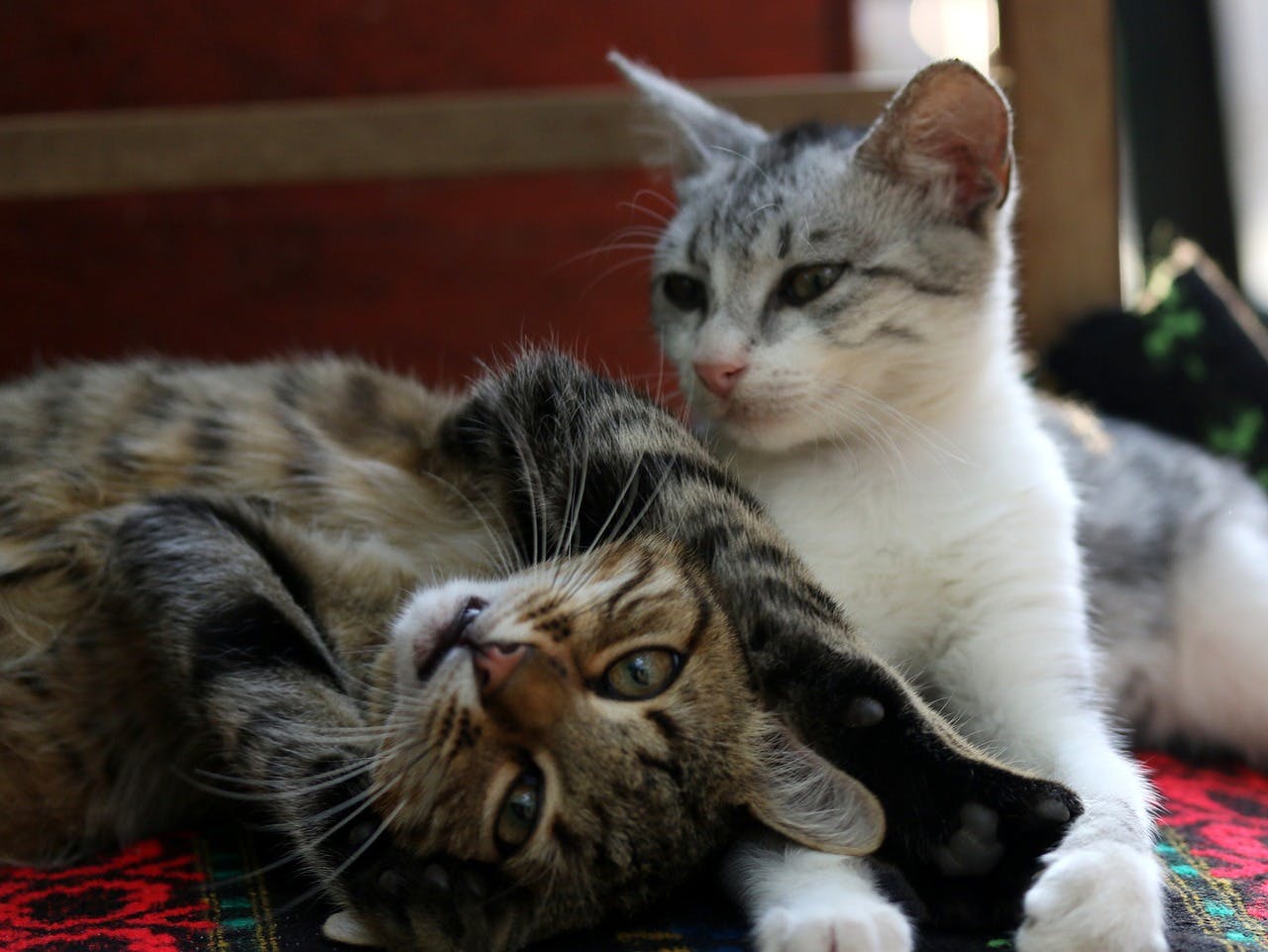Kitties are mostly stay-at-home pets, so the chances of them battling it out with other animals are slim. But for households with more than one feline, cat brawls are probably a regular scene. While it’s normal for cats to fight from time to time, we should try to stop or prevent skirmishes, especially if they get too aggressive. Cat parents can take steps to reduce friction between kitties and help them learn to coexist more peacefully in the same space.
Q: Why are they fighting?
1. Territory
Cats are territorial, even more so than dogs. A kitty can become very unhappy if another cat intrudes on what they believe to be their turf.
2. Fighting between same-sex cats
Feline brawls are often between cats of the same gender, especially those that have not yet been spayed or neutered. Reasons could be due to hormones or mating season.
3. Past experience
If a cat was rescued or adopted, they may have had unpleasant exchanges with other cats in the past when vying for food or territory. It could be why your kitty is easily provoked by another cat.
4. Power dynamics
When introducing a new feline friend to your home, it’s likely that a territorial fight will break out. It is also a way for them to establish a power balance.
5. Social maturity
As cats start to be become socially mature, usually between 2 to 4 years old, they may pick fights with other cats to assert their own status in the family.

Q: How can you differentiate between playfighting and fighting?
A: If they are just playing, cats will mostly be chasing each other around with some rough and tumble. But if you notice it’s just one cat hunting another, that could be a sign of bigger problems. Long stares or any of the following body language are also likely signs that a fight is brewing:
- Claws are out
- Ears flat against the head
- Hair is standing up
- Low growling
- Heavy breathing
- Refusing to let go of a bite even if the other cat is crying out
Q: How should you break up a fight?
A: Keep in mind these 3 key points:
- Do not intervene bare handed. Your kitties will scratch you too when they are in aggressive mode.
- Attempt to divert their attention using toys or snacks.
- Once you have distracted them, separate the cats and give them time to cool down.
Q: What can we do to help our cats get along better?
A: Cats can be social creatures, but they are by nature more solitary animals. Forcing cats who don’t like each other to be friends is unlikely to produce good results. But if done gradually, in stages, your kitties just may take to each other:
1. Train your cats to respond to treats
During feeding time, give the kitties only 70-80% of their regular meal portions. The rest can be given as treats.
2. Keep them in separate areas
Try to keep the kitties apart so they can’t see each other. Use a fence if necessary to prevent them from interacting.
3. Bring them together at mealtimes
When it’s time for food, keep the kitties where they can see each other, but at a safe distance. Give them their food at the same time, and also remove their bowls at the same time. After a while, your cats will start to associate food with each other, and become more comfortable with their fellow felines.
4. Gradually close the distance
If your kitty seem comfortable eating with the other cat nearby, you can slowly shorten their feeding distance by 5cm every mealtime. If they start to display any signs of displeasure or aggression at each other, go back to the original safe distance and try again.
5. You’re almost there!
Keep bringing them closer during feeding time until they are fine eating next to each other.

Food is a great way to train your pets to get along, but don’t neglect other opportunities as well. For example, try to give the kitties extra love and attention only when they are near each other, or bring out their favorite toys to encourage them to play together. The goal is to have them associate all things fun and good with their fellow cats! Remember to be fair and don’t spoil one kitty over the others.
Training cats to get along can take a lot of patience and perseverance. While they are still learning, it’s possible that your kitties could get injured in one of their brawls or develop a health issue due to stress. Pet insurance can help you and your pets cope when inevitable injuries or illnesses happen.
Pawfect Care accepts all breeds of cats and dogs, and reimburses up to 90% of vet bills. It offers comprehensive coverage for when your furry ones need medical attention. For more details, check out here.
